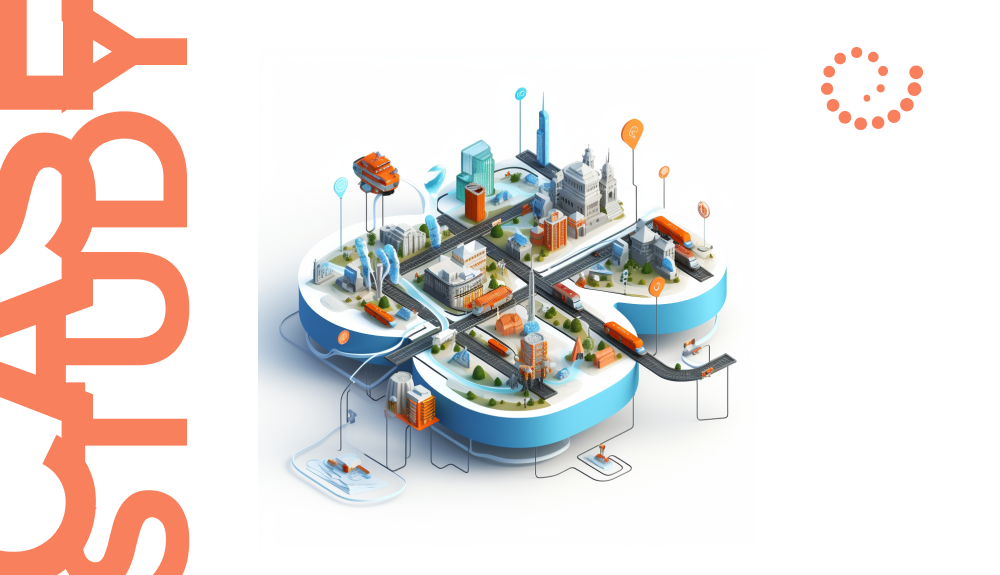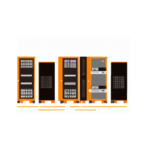
Streamlining Infrastructure for a Social Connection Platform
Ksenia Nikolaenko | September 13th, 2023
In today’s fast-paced digital landscape, a forward-thinking California-based company set out to revolutionize personal connections through virtual interactions. Their aim was to create a cutting-edge online event booking platform tailored for individuals seeking genuine, meaningful relationships. However, beneath the surface of this ambitious goal, a web of intricate infrastructure challenges emerged, posing significant hurdles to their progress.
The Client

Our client is a company headquartered in East Los Angeles, United States, with an annual revenue of $2.2 million.
They maintain a significant online presence, attracting an average of 180,000 website visitors in the last month. However, they faced a challenge with a 55% bounce rate on their website, and their user base exhibited an interesting geographical distribution, with 57% of users originating from Australia and 22% from the United States
The Challenge: Manual Infrastructure and Scaling Difficulties
Manual Configuration
Initially, the company’s infrastructure consisted only of development and production environments, both configured manually through the AWS UI. This setup lacked a crucial intermediary: a staging environment for rigorous testing of new features.
Mindset Shift: Recognizing the Value of Staging Here, the first mindset shift occurred. Developing a staging environment (a replica of the production environment) wasn't a luxury but a necessity. It allowed the business to test new features and changes rigorously before reaching end-users.
Legacy Resources
Over time, some infrastructure resources became outdated and irreplaceable, causing operational inefficiencies and bottlenecks. Attempting to upgrade these resources proved challenging.
Mindset Shift: Embracing Infrastructure as Code (IaaC) The second shift involved adopting Terraform, a tool for automating infrastructure provisioning. Terraform allowed for quick and scalable changes, eliminating the need for manual intervention and transforming the way the company managed its infrastructure.
Development Stage: Embracing Terraform for Success
Step 1: Initial Progress
In just two months, a dedicated team brought all microservices infrastructure to life, consisting of 40 applications in ECS containers and 35 Lambda functions. However, some applications faced issues due to hardcoded configurations.
Step 2: Implementing Terraform
Over the next four months, the team prepared Terraform code and configuration files to create an identical staging environment. This was the pivotal step in their journey.
Step 3: Collaborative Efforts
For several more months, the company’s developers worked closely with Terraform experts to resolve issues and ensure a smooth transition.
Mindset Shift: Taking Ownership They also initiated the shift towards ownership. While Terraform experts were always available for support, the company's team began making minor code adjustments themselves.
Step 4: Continuous Improvement
Even after the project’s completion, periodic discussions were held to reinforce the IaaC concept. A list of recommendations for further improvements was provided.
The Result: Efficient Scaling and Rapid Deployment
Validation: QA Approval
Finally, the company’s QA team tested the new staging environment and gave their approval.
Efficiency Unleashed
Today, scaling the company’s infrastructure is a breeze. Modifying Terraform configuration files allows them to adapt swiftly to changing demands.
Rapid Deployment
Introducing new services on their staging environment now takes a mere 15 minutes, compared to the days it used to consume. This journey showcases the power of Terraform in transforming manual infrastructure into a flexible, scalable, and efficient system.
The Technology Stack
- Terraform: Infrastructure configuration files
- AWS EC2: 40 virtual servers
- AWS ECS: 40 microservices in isolated Docker containers
- AWS ECR: Container code storage
- AWS Lambda: 35 cloud computing functions
- AWS S3: Object storage
- AWS Route53: DNS management
- AWS RDS: Relational database
- AWS IAM: Access management and security groups
- AWS CloudFront: Content delivery acceleration
- AWS OpenSearch: For search queries integration
- AWS Kinesis: Real-time data streaming processing
- AWS SNS: Notification service
- AWS SQS: Integration bus
- MongoDB Atlas: Cloud NoSQL database management
Are you facing similar challenges with your infrastructure? Let’s start a conversation and explore how our development team can empower your business, just as we did for this client!
Related case studies
- Mastering Elasticsearch Indexing: How Setronica Fine-tuned Search Engine PerformanceElasticsearch is a search engine that has become a go-to solution for storing, searching, and analyzing large volumes of data.
- IT Operations Management: How to Monitor Remote Workstations for Tech IssuesWorkstations are specialized computers designed to handle tasks that conventional computers would struggle with.
- Crucial Insights: Why Monitoring Modular Data Centres MattersThe power industry encounters obstacles when distributing electricity across extended distances because of considerable losses along transmission lines.
- A Tailored Metaprograming Approach to Pre-Mentoring Preparation — How Does It Work?Imagine offering mentoring services to your team, where effectiveness is not just a goal but a guarantee.
- Empowering Change Through The Ethical Social NetworkEthical Social Network: MVP revolutionizes nonprofit fundraising, ensuring transparency and compliance for impactful change.
- Streamlining Infrastructure for a Social Connection PlatformStreamlining infrastructure transformed a California company’s growth, embracing Terraform for efficient scaling and rapid deployment.
Let’s start building something great together!
Contact us today to discuss your project and see how we can help bring your vision to life. To learn about our team and expertise, visit our ‘About Us‘ webpage.

Recent Posts
- How to Efficiently Scale Your Startup’s Tech Stack for Maximum Growth
- Shine in Your Interview: 3 Dos and Don’ts to Prove Your Competence with Confidence
- Elevator Pitch: How to “Sell” Yourself in One Minute
- 9 Best Places to Find Free Datasets for Your Next Project
- 9 Key Measures to Protect Digital Assets and Ensure Data Integrity






